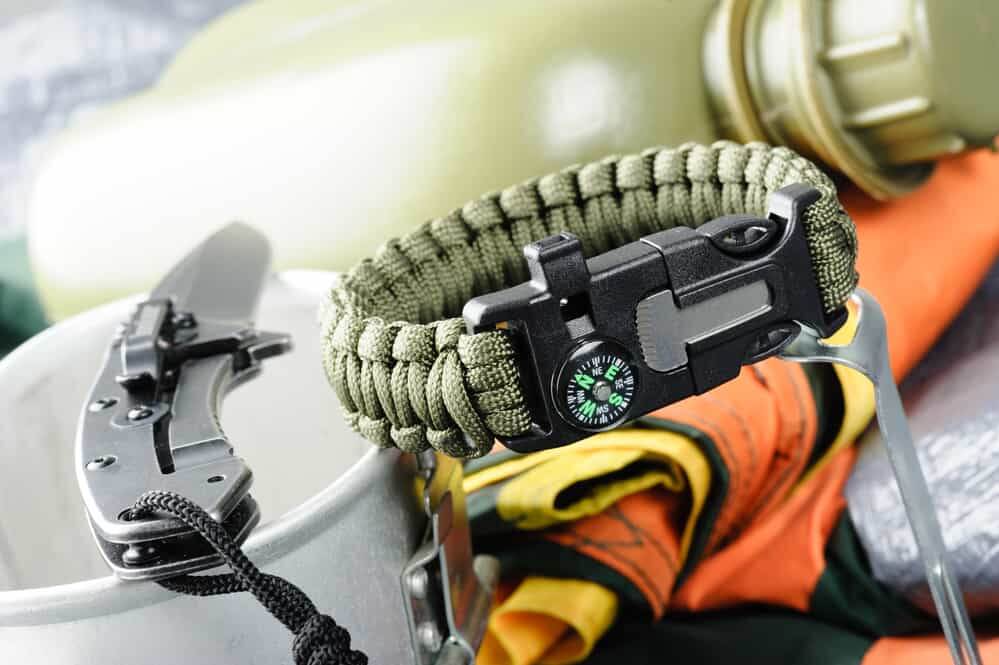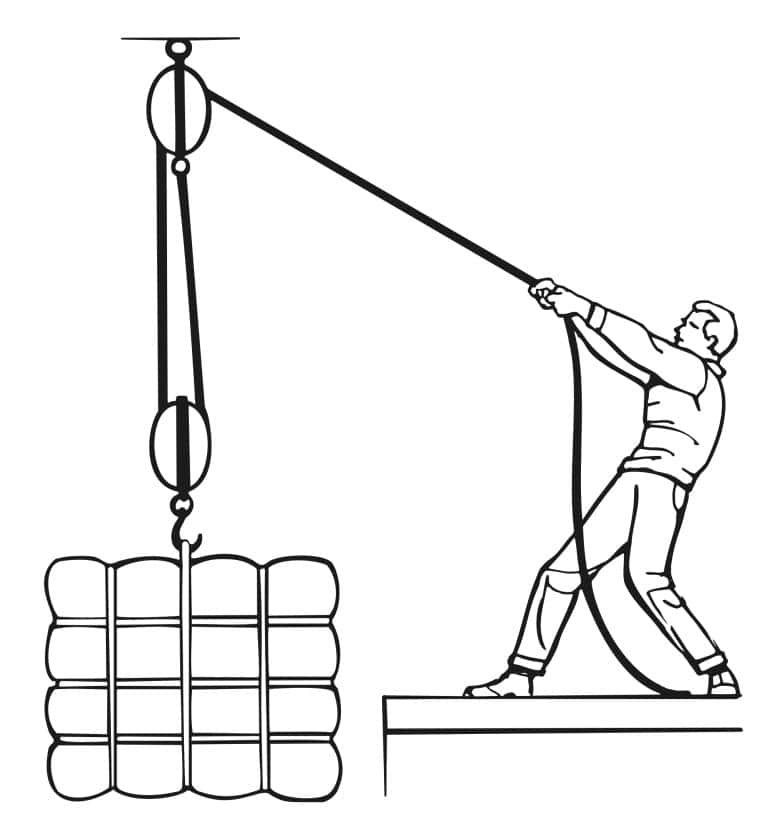Paracord is one of those technological innovations that started in the military.
It grew from there, eventually expanding beyond military applications as paracord is too helpful to remain in a single industrial bubble.
There are many sizes and types of paracord. This guide will keep it at four to discuss the ins and outs of this innovation.
Paracord is considered a Kernmantle rope. Kernmantle means that the rope’s core is built to be flexible and has strength and durability. Then an outer sheath is applied to the rope’s core, so it is not vulnerable to abrasion.
The name paracord arose as this rope was used in parachutes during World War II by paratroops.
So you get the connection, I am sure, paratroops and paracord. Fortunately for us, it has become a mainstay in the public market, no longer belonging solely to the military.
Table of Contents
Types of Paracord
There are many “types” of paracord if you include sizes. However, we will focus on nano-cord, battle-cord, micro-cord, and 550 paracords.
1. 550 Paracords
The 550 paracord is by far the most popular version, not only because of its size but because of its versatility.
Furthermore, it is incredibly durable, and the name of this paracord directly relates to its tensile strength of 550lbs, hence the name.
It has many benefits in the outdoors, especially when it comes to outdoor sports such as fishing, hunting, white water rafting, and climbing.
You will see this paracord in use to tie down tents. Some suggest going with a narrow paracord, but 550 will work fine to stake and tie your tent down.
Hammocks are another great use of 550 paracords, and the cord is wide enough to grant you a decent level of comfort, as narrow paracord would tend to press into your skin. At 550 lbs. of tensile strength, it has more than enough power for you to throw up a hammock and jump into it.
In terms of field emergencies, paracord may be a lifesaver. If you know your first aid and how to put things together, you can use this cord to assemble your splints or use it as a tourniquet.
550 paracord is the most popular of the various paracord types because it has a ton of versatility and strength.
2. Micro cord
Micro-cord is typically about 1.8mm, .07 inches, in diameter, yet it retains an enormous level of strength, as it can hold up to 100lbs.
In addition, Micro-cord is where a lot of the aesthetic properties genuinely shine through in leather sewing, canvas repairs, snares, tie-down of gear, weaving bracelets, necklaces, dog collars and straps to carry gear or knives.
3. Nano cord
Nano cord is smaller than micro cord in size and is .75mm, .03 inches, in diameter, and has 35 lbs. tensile strength.
Nano cord is utilized for fishing lines, crafts such as dream catchers, beading of necklaces, and bracelets and macrame.
4. Battle Cord
Battle cord is the tank of all paracord materials, with a tensile strength of over 2,600lbs.
Imagine a cord that can hold up two and ¼ tons on its own.
So, as you can imagine, this type of cord would be advantageous in hunting and survival situations.
The neatest thing about battle cords is that the individual cords beneath the outer layer can be removed and used independently.
Not only that, but the separate threads have a tensile strength of 300lbs to 350lbs.
That’s a lot for a single string, and that makes the battle cord an excellent choice if you need to build a survival bow.
There are a ton of uses for battle cords, and they will stand up to an immense amount of strain, abrasions, and the normal wear and tear that comes with being out in the wilderness for long periods.
To read more on paracord head over to our article Paracord Use, Strength and Working Load
How is Paracord Different from Rope?
The term rope falls into a pretty broad classification.
In fact, paracord is often called rope, not because it actually is rope, but the term “rope” encompasses most situations where rope and paracord would be used.
Paracord is only made out of either nylon or polyester. However, you can find a paracord manufactured with a combination of nylon or polyester.
Of all types of material you can use to construct rope or paracord, nylon is the strongest, with polyester a close second.
On the other hand, a true rope is made from hemp, propylene, cotton, or sisal.
Sometimes, a rope is created from multiple materials, but generally, this is not the case. However, when you imagine rope in your head, the one that comes to mind more than any other is hemp rope.
In rope, the materials are woven together to make one larger and solid material.
When ropes are created from propylene, this is typically an attempt to replicate the properties of nylon and polyester of a paracord.
Propylene is like a cheap version of polyester and nylon paracords. However, don’t let this fool you, as propylene rope is strong, and don’t underestimate a propylene rope in terms of its ability to hold up.
There are a few things to consider when it comes to the strength and drawbacks of rope and paracord.
Water, for instance. When wet, rope does not get weaker, but it does absorb water and can become extremely heavy.
On the other hand, nylon paracord weakens when wet, while polyester does not.
The only trade-off is that polyester is slightly weaker than nylon, but not by much.
Polypropylene rope also has an advantage over nylon paracord in that it doesn’t weaken when it becomes wet.
Final Thoughts
There are many different types of paracords, so if you’re interested in finding the right kind for your particular needs, you won’t be hurting for lack of choices.
Nylon paracord is one of the strongest and best rope materials available, with polyester not very far behind.
If you’re taking part in outdoor activities that don’t include water, stick with the nylon, but find yourself some polyester if you’re going to be out on the water.
The point is that paracord’s versatility means that there will be something available for everyone.






